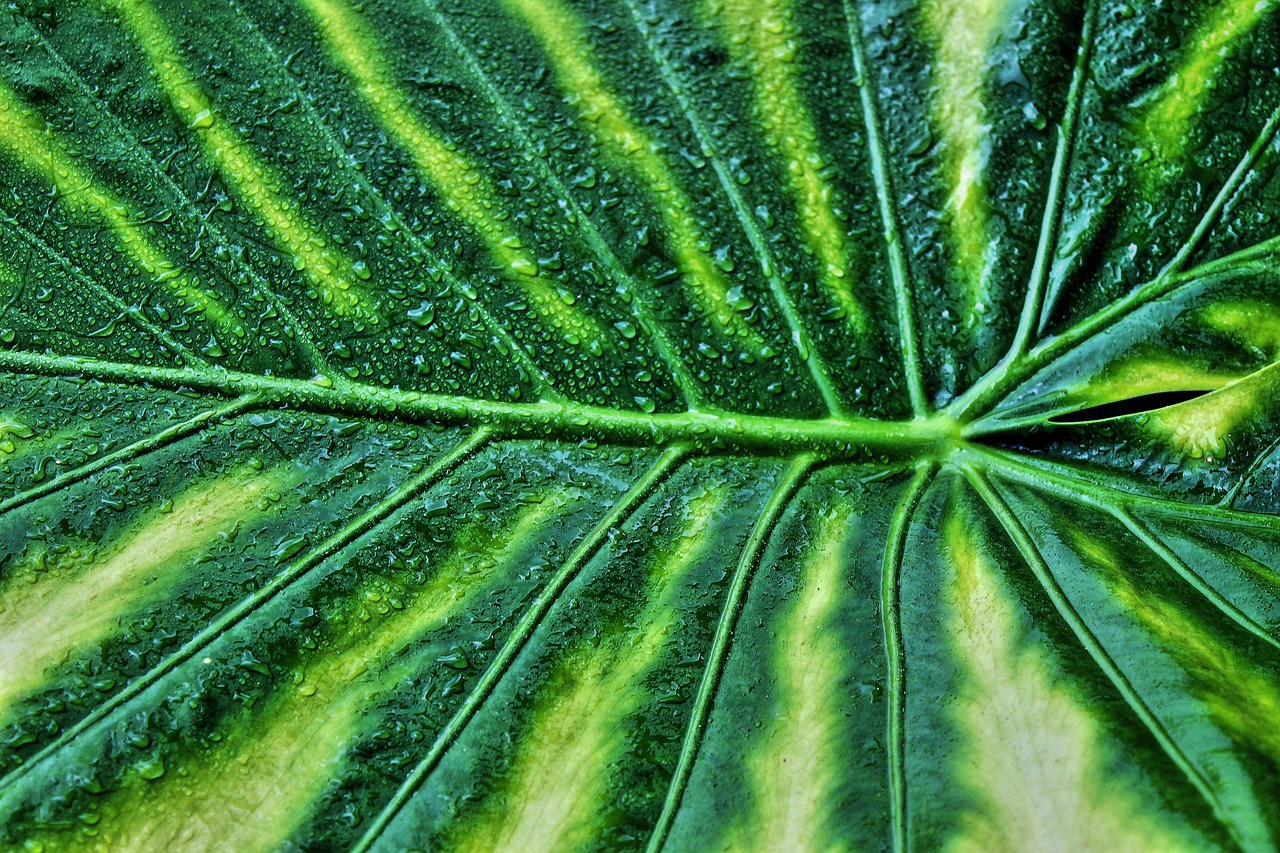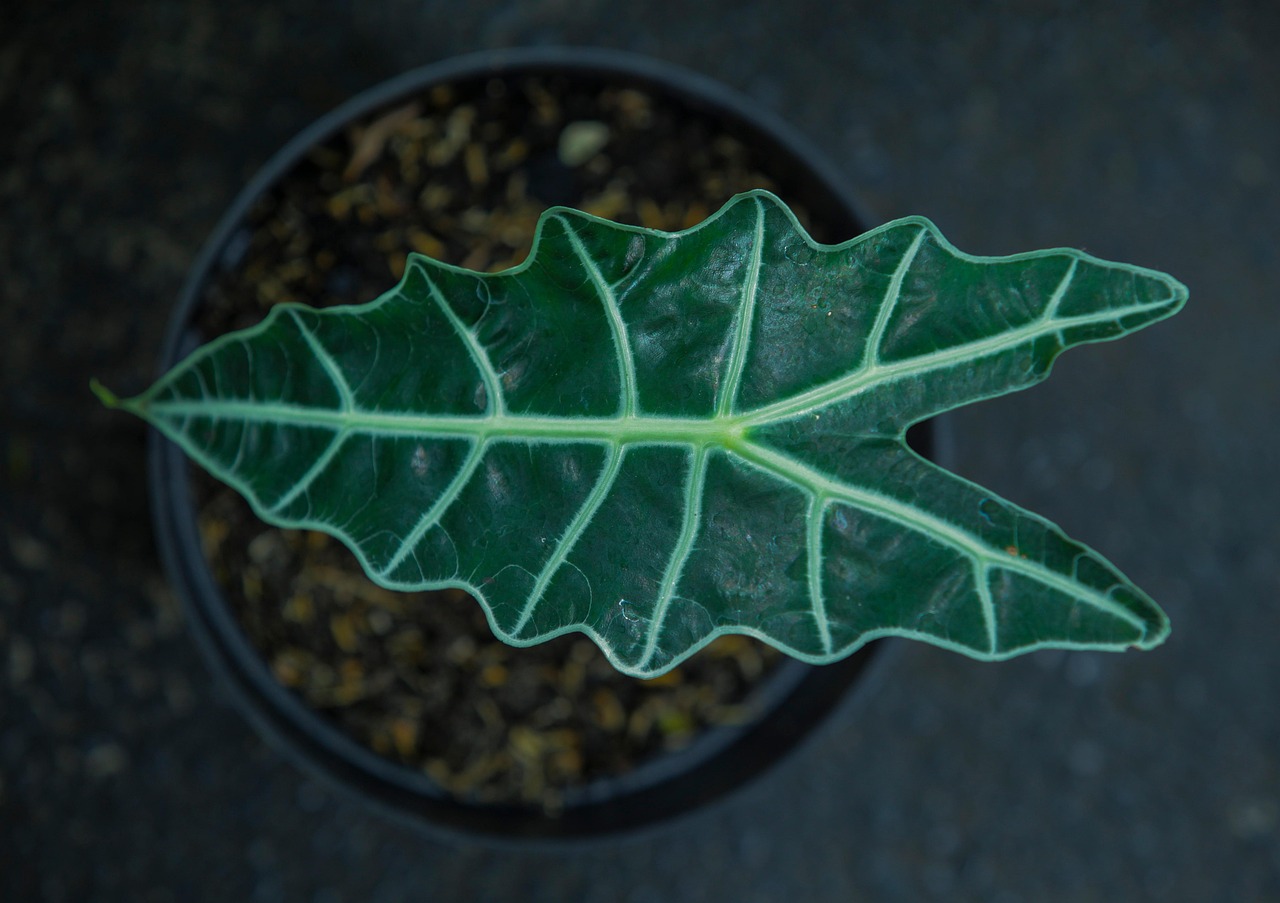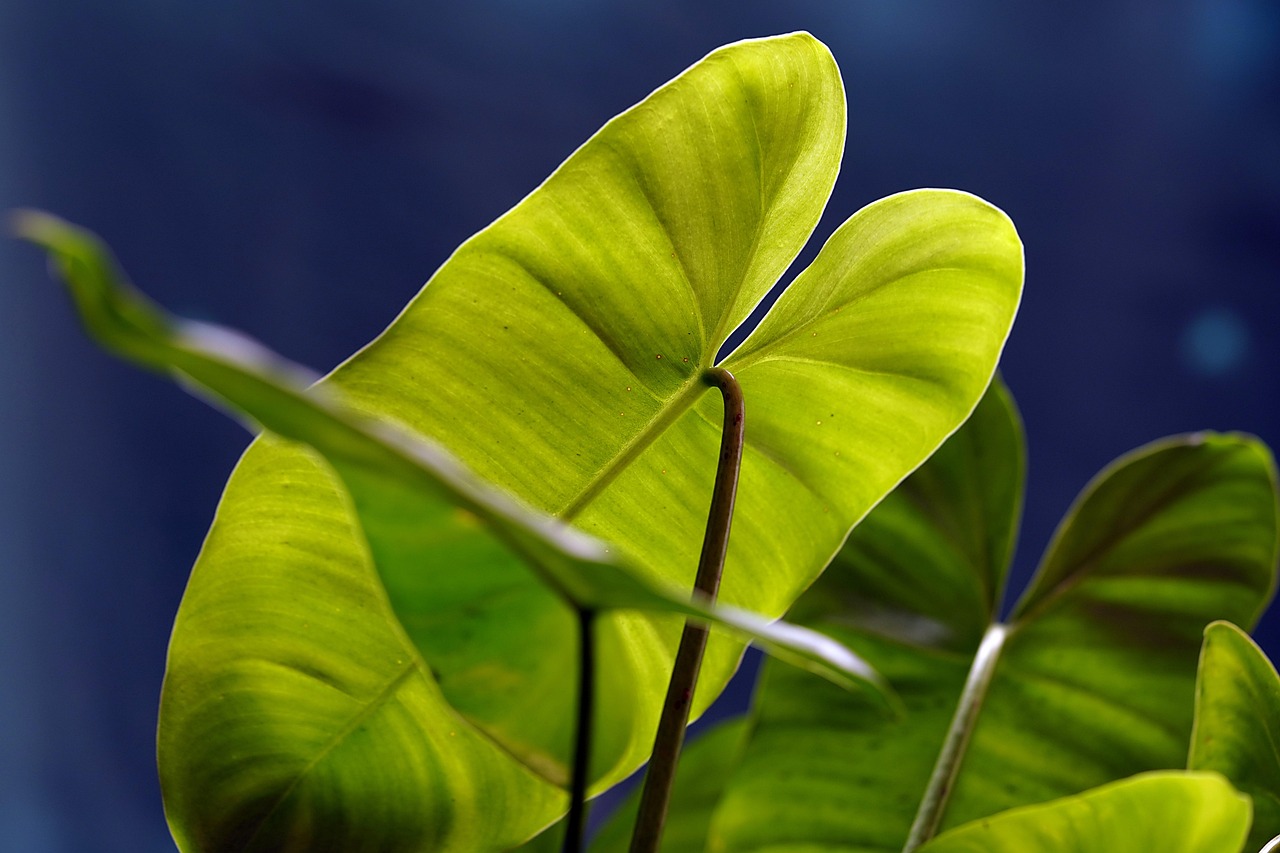To successfully care for an Alocasia Cuprea Red, provide bright, indirect light, maintain high humidity, and water when the top inch of soil is dry. Use a well-draining potting mix and fertilize during the growing season for optimal growth.
Introduction to Alocasia Cuprea Red

The Alocasia Cuprea Red, commonly known as the African Mask Plant or the Red Secret, is a striking houseplant known for its unique foliage. Its large, heart-shaped leaves feature a stunning dark green color with a glossy finish. What sets this plant apart is its vibrant red veins, which add a pop of color and intrigue to any indoor space.
This tropical plant originates from Southeast Asia, particularly in regions such as Malaysia and Indonesia. Its natural habitat consists of rainforests, where it thrives in humid conditions and dappled sunlight. As a houseplant, the Alocasia Cuprea Red requires specific care to replicate its native environment effectively. Understanding its needs is essential for successful growth and maintenance.
One of the key aspects of caring for the Alocasia Cuprea Red is providing the right amount of light. While these plants enjoy bright conditions, direct sunlight can scorch their leaves. Therefore, placing them near a window with filtered light is ideal. Additionally, maintaining humidity levels is crucial. This plant flourishes in environments with high humidity, so consider using a humidifier or placing the pot on a tray filled with water and pebbles to boost moisture levels in the air.
Essential Care Tips
When caring for an Alocasia Cuprea Red, there are several essential tips to keep in mind. These tips will help ensure that your plant remains healthy and vibrant:
- Watering: Water your Alocasia when the top inch of soil feels dry. Ensure that excess water can drain away to avoid root rot.
- Humidity: Aim for humidity levels above 60%. This can be achieved through misting or using humidity trays.
- Temperature: Keep the plant in a warm environment, ideally between 65°F to 80°F (18°C to 27°C).
- Soil: Use a well-draining potting mix that retains some moisture without becoming soggy.
- Fertilization: Feed your Alocasia every 4-6 weeks during the growing season with a balanced fertilizer.
Common Problems and Solutions
Even with the best care, you may encounter some issues while growing an Alocasia Cuprea Red. Here are some common problems and their solutions:
| Problem | Solution |
|---|---|
| Yellowing Leaves | Check for overwatering or insufficient light. |
| Brown Tips | Increase humidity and ensure proper watering. |
| Pests | Inspect regularly for common pests like spider mites or aphids. Use insecticidal soap if necessary. |
By understanding these care tips and common challenges, you can create an ideal environment for your Alocasia Cuprea Red. This attention to detail will not only enhance its beauty but will also contribute to its overall health and longevity.
Understanding the Ideal Environment
Creating the perfect environment for an Alocasia Cuprea Red is essential for its growth and health. This plant thrives in conditions that mimic its native rainforest habitat. Therefore, paying attention to light, temperature, and humidity is crucial.
Light Requirements
The Alocasia Cuprea Red prefers bright, indirect light. Direct sunlight can cause the leaves to scorch, leading to unsightly brown patches. Here are some tips for providing the right light conditions:
- Place the plant in a spot where it receives filtered sunlight, such as near a sheer curtain or in a room with bright ambient light.
- Avoid placing it in dark corners, as this can hinder its growth and lead to leggy stems.
- Rotate the plant regularly to ensure all sides receive equal light exposure.
Temperature Preferences
Temperature plays a significant role in the health of your Alocasia Cuprea Red. This tropical plant prefers warm temperatures, ideally between 65°F to 80°F (18°C to 27°C). Here are some key points to consider:
- Avoid exposing the plant to cold drafts or sudden temperature changes, as this can stress the plant.
- Keep it away from heating vents and air conditioning units, which can create uncomfortable fluctuations.
- During winter, ensure that nighttime temperatures do not drop below 60°F (15°C).
Humidity Levels and Their Importance
One of the most critical aspects of caring for an Alocasia Cuprea Red is maintaining humidity levels. This plant thrives in high humidity, which can be challenging in many indoor environments. Here are strategies to increase humidity:
- Misting: Lightly mist the leaves several times a week to increase moisture in the air surrounding the plant.
- Humidity Trays: Place a shallow tray filled with water and pebbles beneath the pot. As the water evaporates, it will increase humidity levels around the plant.
- Humidifiers: Consider using a humidifier, especially during winter months when indoor air tends to be drier.
Soil Choice
The right soil mix is vital for the health of your Alocasia Cuprea Red. A well-draining potting mix is essential to prevent root rot while retaining some moisture. Here are some recommendations for soil:
- Use a standard potting mix combined with perlite or orchid bark to improve drainage.
- A peat-based mix can also work well, as it retains moisture without becoming overly soggy.
- Consider adding some compost to provide essential nutrients for your plant.
Watering Guidelines
Watering is a crucial aspect of Alocasia care. Overwatering or underwatering can lead to significant issues. Follow these guidelines for proper watering:
- Check the soil moisture regularly by sticking your finger into the top inch of soil.
- Water thoroughly until excess water drains from the bottom of the pot.
- Avoid letting the plant sit in standing water, as this can lead to root rot.
- During the growing season (spring and summer), your Alocasia may need more frequent watering compared to fall and winter.
Fertilization Schedule
Providing the right nutrients is essential for robust growth. Fertilizing your Alocasia Cuprea Red will help it thrive. Here are some fertilization tips:
- Use a balanced liquid fertilizer diluted to half strength every 4-6 weeks during the growing season.
- Avoid fertilizing during the winter months when the plant’s growth slows down.
- If you notice slow growth or yellowing leaves, consider adjusting your fertilization schedule or checking other care aspects.
By understanding and addressing these environmental needs, you will create a thriving atmosphere for your Alocasia Cuprea Red. Each factor plays a significant role in promoting a healthy and beautiful plant that can enhance your indoor space.
Propagation Techniques for Alocasia Cuprea Red
Propagation is an exciting way to expand your collection of Alocasia Cuprea Red plants or share them with friends. Understanding the right methods for propagation can lead to successful new plants. The most common techniques include division and offsets. Each method has its specifics, and knowing how to execute them properly will improve your chances of success.
Division Method
The division method is ideal for propagating mature Alocasia plants. This technique involves separating the tubers from the main plant. Follow these steps for proper division:
- Choose the Right Time: The best time to propagate through division is during the spring or early summer when the plant is actively growing.
- Remove the Plant: Carefully take the Alocasia out of its pot. Gently shake off excess soil to expose the roots.
- Identify Sections: Look for natural divisions in the root system. Each section should have at least one healthy leaf and a set of roots.
- Cut the Roots: Using a clean, sharp knife or scissors, cut the roots to separate the sections without damaging them.
- Replant: Plant each section in a fresh, well-draining potting mix. Water lightly and place them in a warm, humid area.

Offsets Propagation
Offsets are small plantlets that grow at the base of the main plant. These can be easily removed and replanted to create new plants. Here is how to propagate using offsets:
- Identify Offsets: Look for small shoots near the base of the parent plant. Ensure they have a few roots attached.
- Separate Offsets: Gently twist or cut the offsets away from the main plant. Be careful not to damage the roots.
- Prepare for Planting: Let the offsets sit for a few hours or overnight to callous over if they were cut.
- Plant Offsets: Place each offset into its own pot with appropriate potting mix, ensuring it is planted at the same depth as it was previously.
- Water and Care: Water slightly and provide high humidity and indirect light to help establish the new plants.
Pest Management Strategies
Pests can pose a significant threat to your Alocasia Cuprea Red. Regular inspections and prompt action are key to managing any infestations. Here are some common pests that may affect your plant and effective strategies for dealing with them:
Common Pests
- Spider Mites: These tiny pests thrive in dry conditions. They can cause leaf discoloration and webbing on the undersides of leaves.
- Aphids: Small, green insects that suck sap from new growth, leading to curling leaves and stunted growth.
- Mealybugs: White, cottony pests that can cluster in leaf axils and on stems, causing damage by feeding on plant sap.
Pest Control Methods
To manage pests effectively, consider these approaches:
- Regular Inspections: Check your plant weekly for any signs of pests. Early detection can prevent serious infestations.
- Insecticidal Soap: A natural solution that suffocates pests. Spray it directly on infested areas following package instructions.
- Neem Oil: A natural pesticide that disrupts the life cycle of many pests. Dilute according to instructions and apply to affected areas.
- Isolation: If you notice an infestation, isolate the affected plant to prevent pests from spreading to other plants.
Seasonal Care Adjustments
Carin

g for your Alocasia Cuprea Red will vary with the seasons. By making necessary adjustments, you can help ensure its continued health throughout the year.
Spring and Summer Care
During these active growth periods, your plant will benefit from increased attention. Consider these adjustments:
- Increase Watering: Your Alocasia may need more frequent watering as it grows more actively.
- Regular Fertilization: Feed it with balanced fertilizer every 4-6 weeks to support new growth.
- Pest Monitoring: Keep a close eye out for pests during warmer months when they are more active.
Fall and Winter Care
As temperatures drop and daylight decreases, your plant’s needs will change:
- Reduce Watering: Cut back on watering, allowing the top inch of soil to dry out before watering again.
- Avoid Fertilization: Stop fertilizing during this period, as the plant’s growth will slow significantly.
- Maintain Humidity: Use humidifiers or trays to keep humidity levels high during dry winter months.
By understanding propagation techniques, pest management strategies, and seasonal care adjustments, you can enhance your Alocasia Cuprea Red’s growth and resilience. Each aspect of care contributes to a thriving indoor garden that showcases this beautiful plant’s unique characteristics.
Advanced Care Considerations
While

the basic care tips for your Alocasia Cuprea Red are crucial, there are advanced considerations that can further enhance its health and beauty. Understanding these aspects can help you become a more knowledgeable plant parent.
Potting and Repotting
Potting and repotting your Alocasia Cuprea Red is essential for managing its growth effectively. Here are some guidelines:
- Choosing the Right Pot: Select a pot that is slightly larger than the current one, with drainage holes to prevent water accumulation.
- Repotting Frequency: Repot every 1-2 years or when the roots start to outgrow the pot, usually during the spring.
- Soil Refreshment: When repotting, refresh the potting mix to supply fresh nutrients and improve aeration.
Leaf Care and Maintenance
The glossy leaves of the Alocasia Cuprea Red are one of its standout features. Proper leaf care can keep them looking vibrant:
- Dusting Leaves: Wipe the leaves gently with a damp cloth to remove dust and enhance light absorption.
- Pruning Dead Leaves: Regularly remove any yellowing or dead leaves to promote new growth and maintain plant health.
- Avoiding Leaf Damage: Be cautious when moving or handling the plant to prevent tearing or damaging the leaves.
Common Myths and Misunderstandings
There are several myths surrounding the care of Alocasia plants. Being aware of these can help prevent common mistakes:
- Myth 1: Alocasia Plants Are Toxic: While they can be mildly toxic if ingested, proper care can mitigate risk. Always keep them out of reach of pets and children.
- Myth 2: They Need Constant Watering: Overwatering is more harmful than underwatering. It’s essential to allow the soil to dry out between waterings.
- Myth 3: They Can Thrive in Low Light: Alocasia Cuprea Red needs bright, indirect light to thrive. Low light can hinder its growth and vitality.
Final Thoughts
Caring for an Alocasia Cuprea Red can be a rewarding experience that enhances your indoor garden. With its stunning foliage and unique characteristics, this plant adds beauty and intrigue to any space. By following the care tips outlined in this article—such as understanding light requirements, humidity levels, watering needs, pest management, and seasonal adjustments—you can create an ideal environment for your plant to thrive.
Remember that each Alocasia Cuprea Red may have its unique preferences. Observing your plant closely will help you tailor its care to meet its specific needs. Be patient and attentive as you provide the necessary conditions for growth. Whether you are propagating new plants or simply enjoying your current one, the journey of nurturing this beautiful species will be fulfilling.
By integrating advanced care techniques and debunking common myths, you will empower yourself to maintain a healthy and vibrant Alocasia Cuprea Red. Embrace the process, and soon you will have a flourishing plant that brings joy and beauty to your home.
